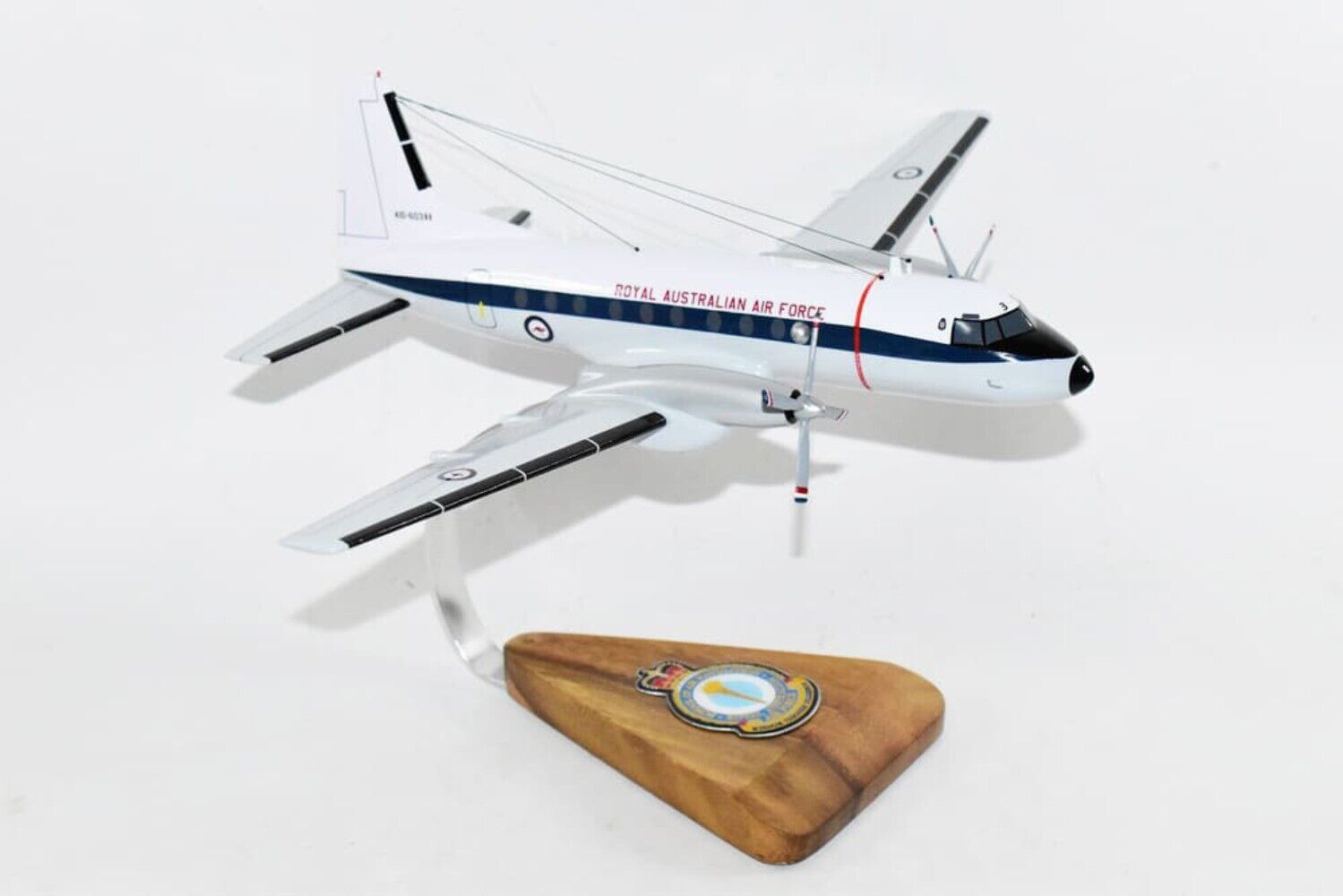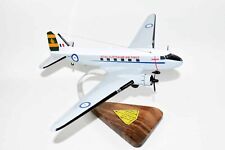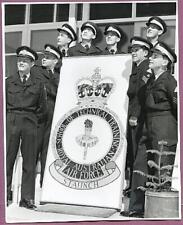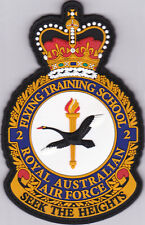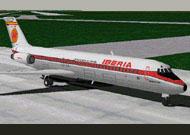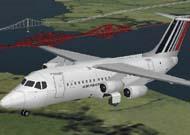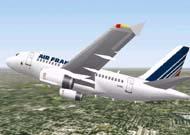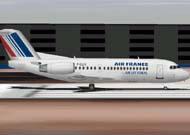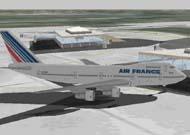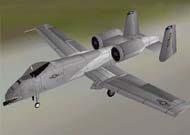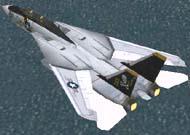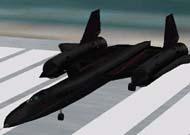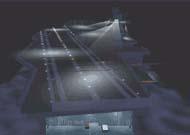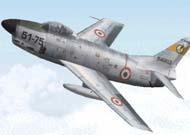When you click on links to various merchants on this site and make a purchase, this can result in this site earning a commission. Affiliate programs and affiliations include, but are not limited to, the eBay Partner Network.
RAAF School of Navigation HS-748 Model,Mahogany Scale ModelRAAF School of Navigation HS-748 Model Go thru the RAAF School of Navigation again in this handcrafted HS-748 model. Each piece is carved from wood and painted to provide a piece you’ll love. Length – 12.5 inches Made from Mahogany US Veteran Owned Business The Hawker Siddeley HS 748 is a medium-sized turboprop airliner originally designed by the British firm Avro in the late 1950s as a replacement for the aging DC-3s then in widespread service as feederliners. Avro concentrated on performance, notably for STOL operations, and found a dedicated market. 380 aircraft were built by Hawker Siddeley. A larger, stretched development of the HS 748, the BAe ATP, attempted to compete with the de Havilland Canada Dash 8 but saw a limited production run. The original 748 design was started in 1958, after the Duncan Sandys 1957 Defence White Paper ended most military manned-aircraft development in the UK, and Avro decided to re-enter the civilian market. The Vickers Viscount had the larger end of the short-haul market, and Avro therefore decided to design a smaller regional airliner powered by two Rolls-Royce Dart turboprop engines, intended to replace the many DC-3 Dakotas that were by then reaching the end of their economic lifespan. Original plans were for a 20-30 seat aircraft with a similar configuration to the Fokker F27, but talks with potential customers soon led to a low-wing 40 seat design being chosen for the 748 project. Avro was not the only company to see the potential for a DC-3 replacement, and by this point work on the 748’s direct competitor, the Fokker F27 Friendship turboprop, was well advanced. Avro therefore decided to compete by producing a more rugged design with better short-field performance, allowing it to operate from smaller airports and those with rough surfaces. This was accomplished with a long, high lift wing and a unique single slot flap with a hinged flap tab at the trailing edge. The wing was mounted low on the fuselage with dihedral from the root, allowing good overall ground clearance and easy mounting of strong durable landing gear. Other features of the 748 included an internal engine starting system, and systems and structures that were designed to be easy to inspect and repair in the field with limited equipment. The 748 was one of the first medium-sized aircraft to use fail-safe design principles in the structure, instead of the then common safe-life principles. Because of these features, the 748 quickly became popular (and still is today) with a variety of airlines operating in remote areas thanks to its ability to haul payloads of over 10,000 lbs in and out of short rough fields with little to no ground service equipment. The first Avro 748 flew from the company’s Woodford, Cheshire aircraft factory on 24 June 1960, and testing of the two prototypes quickly proved the type’s short-field performance. 18 Avro 748 Series 1 aircraft were produced, the first for Skyways Coach-Air Limited being delivered in April 1962. However, the majority of the series 1 were delivered to Aerolíneas Argentinas. By this point, Avro’s individual identity within the Hawker Siddeley Group had ended and the design became known as the HS 748. After the initial batch of series 1 aircraft production switched to the series 2, which was similar to the series 1 but with more powerful RR Dart RDa 7 Mk 531 engines and increased gross weight. In 1967 the series 2A was introduced which, again, was the same basic aircraft but with Mk. 532 engines and a further increase in gross weight. From 1971 on, a large freight door in the rear cabin and strengthened cabin floor were offered as options on the Srs 2A. In 1979 the Series 2B was introduced, which featured a 4-foot increase in wingspan at the tips, Mk 536-2 engines, a modernized passenger cabin, and improvements to the fuel, water methanol injection system, and engine fire protection systems. In 1972, a Hawker Siddeley 748 was one of the last planes to be flown by noted aviator Howard Hughes. He took part in several flights, accompanied in the cockpit by Hawker Siddeley test pilot Tony Blackman, and taking off from the company’s airfield at Hatfield.[1] The 748 Series 1 and Series 2 were also licence-produced in India by Hindustan Aeronautics (HAL) as the HAL-748. HAL built 89 aircraft in India, 72 for the Indian Air Force and 17 for the Indian Airlines Corporation. Hawker Siddeley also used the HS 748 as the base for their HS 780 Andover, a transport aircraft built for the Royal Air Force. The HS 780s were essentially 748s but with a redesigned rear fuselage and empenage which included a large rear loading ramp and a squatting main landing gear to allow fast and easy loading of large freight items. Production of the HS 748 ended in 1988, by which time 380 were produced (including the Andover and HAL-748). Typical passenger seating in the HS 748 is for 40-48 economy class seats (4 abreast), however most passenger HS 748s still in service are operated as quick change combis, with a movable bulkhead dividing the main cabin two, with anywhere from 4 to 40 seats in the rear section and cargo in the forward section. The 748 is also widely used as a pure freighter with a typical max payload of about 12,000 lbs. Several carriers also use the 748 as a bulk fuel hauler, with either seven or eight fixed tanks in the cabin with a total capacity of about 7500 litres (2000 US Gallons). The ICAO designator as used in flight plans is A748. The basic price for a new Avro 748 Series 1 in 1960 was £176,000, with the corresponding Avro 748 Series 2 being £196,000. RAAF School of Navigation HS-748 Model,Mahogany Scale Model RAAF School of Navigation HS-748 Model
Go thru the RAAF School of Navigation again in this handcrafted HS-748 model. Each piece is carved from wood and painted to provide a piece you’ll love.
- Length – 12.5 inches
- Made from Mahogany
- US Veteran Owned Business
The Hawker Siddeley HS 748 is a medium-sized turboprop airliner originally designed by the British firm Avro in the late 1950s as a replacement for the aging DC-3s then in widespread service as feederliners. Avro concentrated on performance, notably for STOL operations, and found a dedicated market. 380 aircraft were built by Hawker Siddeley. A larger, stretched development of the HS 748, the BAe ATP, attempted to compete with the de Havilland Canada Dash 8 but saw a limited production run.
The original 748 design was started in 1958, after the Duncan Sandys 1957 Defence White Paper ended most military manned-aircraft development in the UK, and Avro decided to re-enter the civilian market.
The Vickers Viscount had the larger end of the short-haul market, and Avro therefore decided to design a smaller regional airliner powered by two Rolls-Royce Dart turboprop engines, intended to replace the many DC-3 Dakotas that were by then reaching the end of their economic lifespan. Original plans were for a 20-30 seat aircraft with a similar configuration to the Fokker F27, but talks with potential customers soon led to a low-wing 40 seat design being chosen for the 748 project.
Avro was not the only company to see the potential for a DC-3 replacement, and by this point work on the 748’s direct competitor, the Fokker F27 Friendship turboprop, was well advanced. Avro therefore decided to compete by producing a more rugged design with better short-field performance, allowing it to operate from smaller airports and those with rough surfaces. This was accomplished with a long, high lift wing and a unique single slot flap with a hinged flap tab at the trailing edge. The wing was mounted low on the fuselage with dihedral from the root, allowing good overall ground clearance and easy mounting of strong durable landing gear. Other features of the 748 included an internal engine starting system, and systems and structures that were designed to be easy to inspect and repair in the field with limited equipment. The 748 was one of the first medium-sized aircraft to use fail-safe design principles in the structure, instead of the then common safe-life principles. Because of these features, the 748 quickly became popular (and still is today) with a variety of airlines operating in remote areas thanks to its ability to haul payloads of over 10,000 lbs in and out of short rough fields with little to no ground service equipment.
The first Avro 748 flew from the company’s Woodford, Cheshire aircraft factory on 24 June 1960, and testing of the two prototypes quickly proved the type’s short-field performance. 18 Avro 748 Series 1 aircraft were produced, the first for Skyways Coach-Air Limited being delivered in April 1962. However, the majority of the series 1 were delivered to Aerolíneas Argentinas. By this point, Avro’s individual identity within the Hawker Siddeley Group had ended and the design became known as the HS 748.
After the initial batch of series 1 aircraft production switched to the series 2, which was similar to the series 1 but with more powerful RR Dart RDa 7 Mk 531 engines and increased gross weight. In 1967 the series 2A was introduced which, again, was the same basic aircraft but with Mk. 532 engines and a further increase in gross weight. From 1971 on, a large freight door in the rear cabin and strengthened cabin floor were offered as options on the Srs 2A. In 1979 the Series 2B was introduced, which featured a 4-foot increase in wingspan at the tips, Mk 536-2 engines, a modernized passenger cabin, and improvements to the fuel, water methanol injection system, and engine fire protection systems.
In 1972, a Hawker Siddeley 748 was one of the last planes to be flown by noted aviator Howard Hughes. He took part in several flights, accompanied in the cockpit by Hawker Siddeley test pilot Tony Blackman, and taking off from the company’s airfield at Hatfield.[1]
The 748 Series 1 and Series 2 were also licence-produced in India by Hindustan Aeronautics (HAL) as the HAL-748. HAL built 89 aircraft in India, 72 for the Indian Air Force and 17 for the Indian Airlines Corporation. Hawker Siddeley also uséd the HS 748 as the base for their HS 780 Andover, a transport aircraft built for the Royal Air Force. The HS 780s were essentially 748s but with a redesigned rear fuselage and empenage which included a large rear loading ramp and a squatting main landing gear to allow fast and easy loading of large freight items.
Production of the HS 748 ended in 1988, by which time 380 were produced (including the Andover and HAL-748).
Typical passenger seating in the HS 748 is for 40-48 economy class seats (4 abreast), however most passenger HS 748s still in service are operated as quick change combis, with a movable bulkhead dividing the main cabin two, with anywhere from 4 to 40 seats in the rear section and cargo in the forward section. The 748 is also widely uséd as a pure freighter with a typical max payload of about 12,000 lbs. Several carriers also use the 748 as a bulk fuel hauler, with either seven or eight fixed tanks in the cabin with a total capacity of about 7500 litres (2000 US Gallons).
The ICAO designator as uséd in flight plans is A748.
The basic price for a new Avro 748 Series 1 in 1960 was £176,000, with the corresponding Avro 748 Series 2 being £196,000.
× × × × × × × × ×
Buy now and save! Shipping info
Click the Shipping & Payments tab above the listing description for more info
FREE Shipping
Click the Shipping & Payments tab above the listing description for more info!
Additional delivery notes
PICK UP OPTION
Sorry, our items are NOT available for pick-up.
PAYMENT
Immediate payment is required upon selecting \"Buy It Now\" or upon checking out through the cart.
We accept payment via U.S. PayPal accounts and all Major Credit Cards, Debit Cards & Google Pay.
We are legally required to collect sales tax in those states and localities where we maintain a physical presence (nexus).
The applicable amount of sales tax charged to an order will be calculated based on the shipment destination\'s state and local sales tax laws.
Thank you for shopping with us on !
Additional Information
No additional information at this time
Ask seller a question
You might also like VP-10 Red Lancers Plaque HT-28 Hellions Plaque Contact
To contact our Customer Service Team, simply click the button here and our Customer Service team will be happy to assist.
Ask seller a question
© Squadron Nostalgia LLC
Shipping & Payments
Shipping is FREE for this item
Payment
Accepted Payment Methods
Immediate payment is required upon selecting \"Buy It Now\" or upon checking out through the cart.
We accept payment via U.S. PayPal accounts and all Major Credit Cards, Debit Cards & Google Pay.
We are legally required to collect sales tax in those states and localities where we maintain a physical presence (nexus).
The applicable amount of sales tax charged to an order will be calculated based on the shipment destination\'s state and local sales tax laws.
Thank you for shopping with us on !
Returns
Returns are accepted
Items must be returned within 30 days of the sale ending
Seller will pay for return shipping.
integration by


